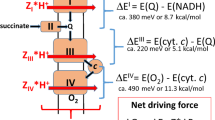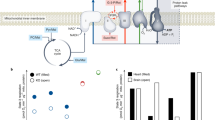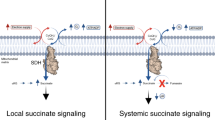Abstract
AN integral and constant stoichiometric ratio is usually assumed to relate to coupled metabolic processes. In particular, the ratio of ATP production to oxygen consumption (P/O) is considered integral and constant in all discussions of oxidative phosphorylation. This view is maintained despite the fact that it conflicts with a great deal of experimental evidence1. Although the discrepancies are often explained on the basis of technical difficulties, Slater2 has pointed out that some uncoupling may represent physiological reactions, and that it is probably not possible completely to eliminate “uncoupled” reactions. We feel that despite the recognition of intrinsic uncoupling, its true significance has not been appreciated. Mechanisms and efficiency are still invariably assessed in terms of stoichiometry. We shall discuss some sources of non-stoichiometry, and then consider the implications of incomplete coupling, with particular reference to theories of oxidative phosphorylation.
This is a preview of subscription content, access via your institution
Access options
Subscribe to this journal
Receive 51 print issues and online access
$199.00 per year
only $3.90 per issue
Buy this article
- Purchase on Springer Link
- Instant access to full article PDF
Prices may be subject to local taxes which are calculated during checkout
Similar content being viewed by others
References
Slater, E. C., in Comprehensive Biochemistry (edit. by Florkin, M., and Stotz, E. H.), 14. 327 (Elsevier, New York, 1966).
Slater, E. C., in Comprehensive Biochemistry (edit. by Florkin, M., and Stotz, E. H.), 14, 334 (Elsevier, New York, 1966).
Slater, E. C., in Comprehensive Biochemistry (edit. by Florkin, M., and Stotz, E. H.), 14, 348 (Elsevier, New York, 1966).
Porter, G., and Wright, M. R., Dis. Faraday Soc., 27, 18 (1959).
Mitchell, P., Biol. Rev., 41, 445 (1966).
Slater, E. C., in Comprehensive Biochemistry (edit. by Florkin, M., and Stotz, E. H.), 14, 330 (Elsevier, New York, 1966).
Kedem, O., and Caplan, S. R., Trans. Faraday Soc., 61, 1897 (1965).
Slater, E. C., in Biochemistry of Mitochondria (edit. by Slater, E. C., et al.), 1 (Academic Press Inc., New York, 1967).
Mitchell, P., and Moyle, J., in Biochemistry of Mitochondria (edit. by Slater, E. C., et al.), 53 (Academic Press Inc., New York, 1967).
Rossi, C., and Azzone, G. F., Biochim. Biophys. Acta, 110, 434 (1965).
Carafoli, E., Gamble, R. L., Rossi, C. F., and Lehninger, A. L., J. Biol. Chem., 242, 1199 (1967).
Cockrell, R. S., Harris, E. J., and Pressman, B. C., Biochemistry, 5, 2326 (1966).
Chappell, J. B., and Haarhoff, K. N., in Biochemistry of Mitochondria (edit. by Slater, E. C., et al.), 88 (Academic Press Inc., New York, 1967).
Slater, E. C., Europ. J. Biochem., 1, 317 (1967).
Author information
Authors and Affiliations
Rights and permissions
About this article
Cite this article
ROTTENBERG, H., CAPLAN, S. & ESSIG, A. Stoichiometry and Coupling: Theories of Oxidative Phosphorylation. Nature 216, 610–611 (1967). https://doi.org/10.1038/216610a0
Received:
Published:
Issue Date:
DOI: https://doi.org/10.1038/216610a0
This article is cited by
-
The evolution of molecular biology into systems biology
Nature Biotechnology (2004)
-
Regulation of respiration and ATP synthesis in higher organisms: Hypothesis
Journal of Bioenergetics and Biomembranes (1986)
-
Time course of active Na transport and oxidative metabolism following transepithelial potential perturbation in toad urinary bladder
The Journal of Membrane Biology (1981)
-
Thermodynamic analysis of active sodium transport and oxidative metabolism in toad urinary bladder
The Journal of Membrane Biology (1977)
-
The measurement of transmembrane electrochemical proton gradients
Journal of Bioenergetics (1975)
Comments
By submitting a comment you agree to abide by our Terms and Community Guidelines. If you find something abusive or that does not comply with our terms or guidelines please flag it as inappropriate.



